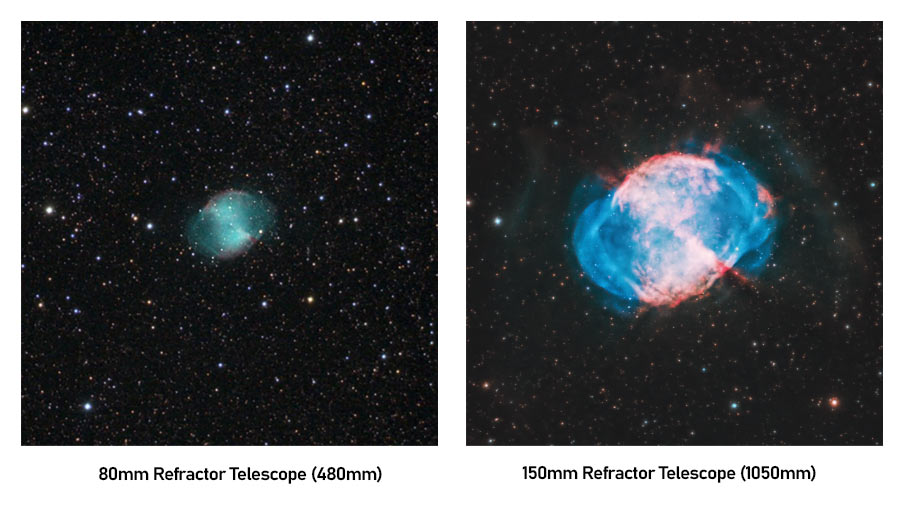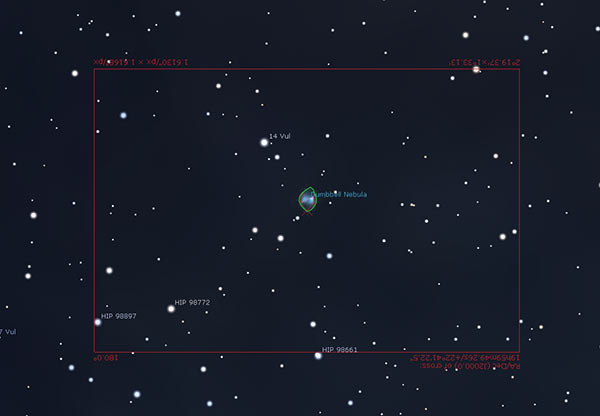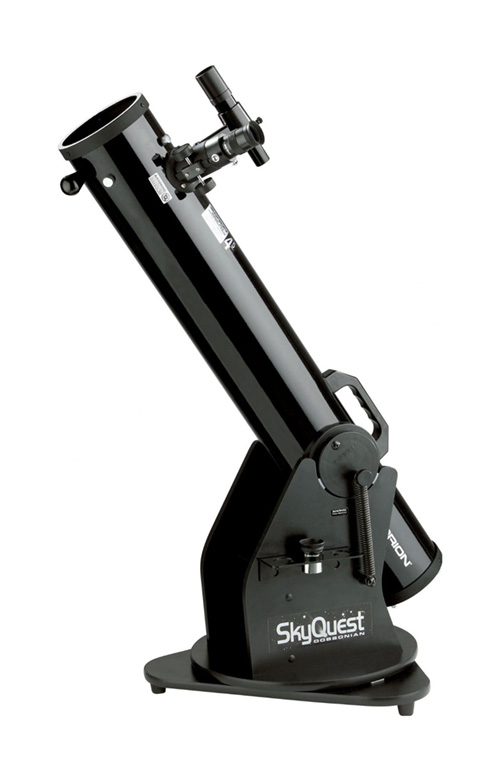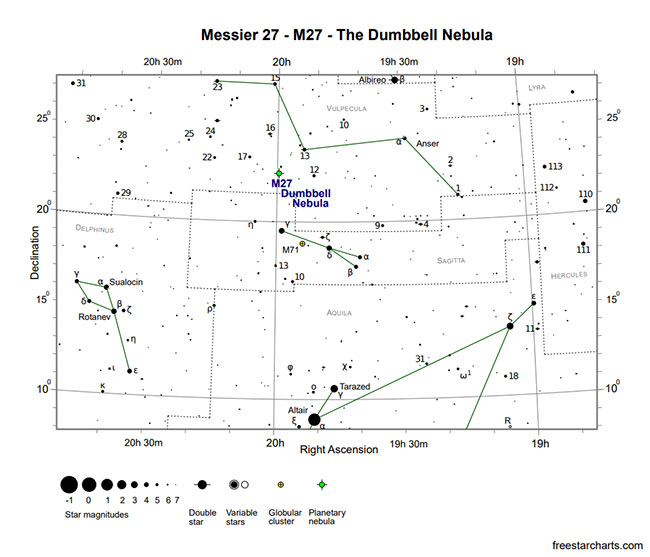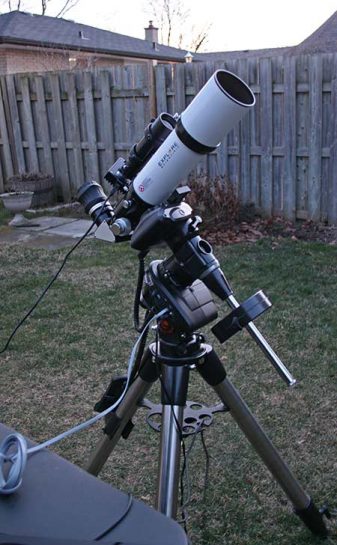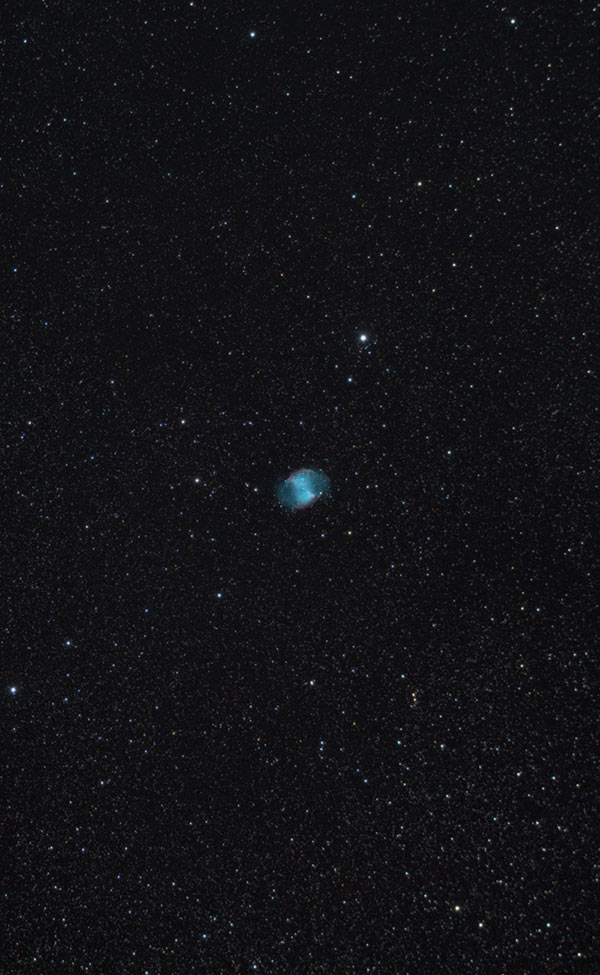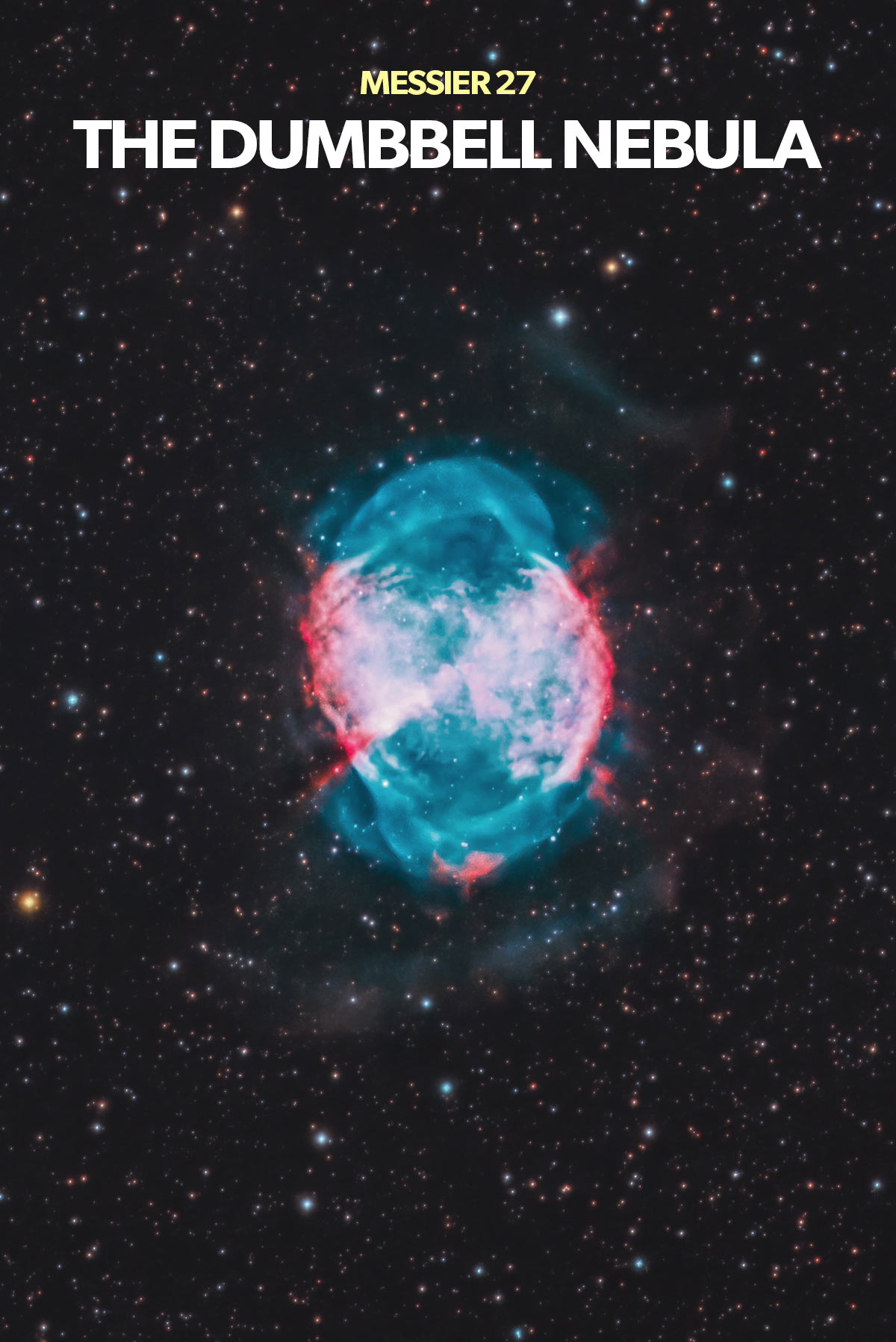Photograph the Dumbbell Nebula this Summer
M27, commonly known as the Dumbbell Nebula, is a bright planetary nebula in the northern constellation Vulpecula. Scientists estimate that this nebula lies approximately 1,200 light-years from Earth.
If you can see the constellation Vulpecula from your backyard, there is a good chance you can view the Dumbbell Nebula with a small telescope. With an apparent magnitude of +7.5, this nebula is brighter than most of the other nebulae in the night sky.
The Dumbbell Nebula in Vulpecula.
The image shown above includes 6 hours and 20 minutes of total exposure time using narrowband filters (5 and 7-minute exposures in Ha and OIII). The telescope used was a Sky-Watcher Esprit 150, and the camera was a Starlight Xpress Trius 694 Mono.
As far as deep-sky objects go, the Dumbbell Nebula is quite small and bright. For reference, the Dumbbell Nebula is about one-quarter of the size of the full moon.
The camera and telescope used for my latest image of the Dumbbell Nebula.
Dumbbell Nebula Details:
- Messier: 27
- NGC: 6853
- Object Type: Planetary Nebula
- Constellation: Vulpecula
- Distance: 1,227 light-years
- Apparent Magnitude: +7.5
- Apparent Size: 8.0 x 5.7 arc-minutes
The Dumbbell Nebula was the first planetary nebula to be discovered by Charles Messier in 1764. Messier 27 is easily visible through a pair of binoculars or a small telescope, even from a light-polluted location.
In the middle of the Dumbbell Nebula, you may notice a central star. This is classified as a White Dwarf, which is estimated to have a radius of 0.13 light seconds. As small as this may seem, it is actually larger than most White Dwarf stars.
Photographing the Dumbbell Nebula
The Dumbbell Nebula is a popular target for beginners in astrophotography because it delivers incredible results with minimal exposure time. Telescopes of nearly any focal length (250-1000mm+) can capture a pleasing image of this nebula, but using shorter focal lengths will record it quite small.
For example here are two images of the Dumbbell Nebula captured using short and long focal lengths (magnification). The image on the left was captured using a DSLR camera (crop sensor) and a 480mm telescope, while the image on the right was taken with a dedicated astronomy camera and a 1050mm telescope.
The images are not to scale, but the amount of resolution and detail in the longer focal length telescope is evident. Both images were cropped extensively to isolate the Dumbbell Nebula in the field of view.
To see the exact size this object will appear in your camera system, you can try using the sensor view in Stellarium (see below). This is what I use to plan my astrophotography projects using a specific set of equipment.
The size of the Dumbbell Nebula using a DSLR camera (APS-C) and my Sky-Watcher Esprit 100 telescope.
This bright planetary nebula will turn out great in both broadband astrophotography (full-color RGB) and narrowband imaging. A broad spectrum image will record the natural star colors of the area, while narrowband filters will better isolate the dynamic details of the object.
A blend of RGB and narrowband data (especially H-Alpha) is a good idea, although I’ve not created a blended version of the image myself. I recommend trying an HOO palette image, mapping data captured using an OIII filter to the green and blue channels, and the Ha to red.
Can You See it Through a Telescope?
Yes, the Dumbbell Nebula is bright enough (visual magnitude 7.5) to observe it through your telescope eyepiece or a pair of binoculars. Those that observe the object from a dark sky location away from city light pollution will have a better view.
You’ll need to look between the stars Deneb and Altair of the Summer Triangle, above the small constellations of Delphinus and Sagitta. You can use a stargazing app on your smartphone to help identify nearby bright stars to help you “star hop” over to this nebula.
The location of the Dumbbell Nebula in Vulpecula.
Through a pair of binoculars, the Dumbbell Nebula will appear as a rounded fuzzy path about one-quarter of the size of the full moon. It has a distinct twin-lobe shape, which explains its given names of “the dumbbell nebula” and “the apple core nebula”.
M27 can easily be seen with a telescope with moderate to large apertures. The first time I saw the Dumbbell Nebula through the eyepiece of my telescope was using a 4.5″ Dobsonian reflector.
The telescope I used to view the Dumbbell Nebula for the first time.
Unlike many of the other deep-sky objects I talk about on this website, the Dumbbell Nebula can easily be seen visually (without color) through a telescope. A long exposure photograph will reveal much more detail, but this planetary nebula is a pleasing sight through the eyepiece as well.
If you’re looking to buy your first telescope, please watch this video to see what I recommend: Buying Your First Telescope? Here’s What I Recommend.
The Constellation Vulpecula
Vulpecula is a faint northern constellation found within the Milky Way, to the south of Cygnus. It was introduced in the late 17th century by the Polish astronomer, Johannes Hevelius. At the time, Johannes described 10 new constellations, and 7 are still used today.
Vulpecula is Latin for “little fox”, although today it is most commonly known simply as “the fox”. Its brightest star is Alpha Vulpeculae (magnitude 4.4) and is located in the middle of the Summer Triangle.
Where to find the Dumbbell Nebula – Star Chart by www.freestarcharts.com
Astrophotography
In the following video, I document the entire process of photographing a nebula (the Dumbbell Nebula) with my telescope in the backyard. To create the final image, I used a Sky-Watcher Esprit 150 apochromatic refractor telescope, and a Starlight Xpress CCD camera.
Using this particular deep-sky imaging setup, the Dumbbell Nebula appeared much larger than it did in my small refractor telescopes. Due to the increased magnification of the telescope (1050mm), the nebula was recorded in great detail.
The Dumbbell Nebula is a satisfying target to capture with a DSLR camera and telescope, as the bright color and details of M27 are revealed in a relatively short exposure. Using narrowband filters can help reveal the outer structure of this object (particularly Ha and OIII).
However, a broadband true-color image with a regular DSLR camera is quite impressive on its own.
When it comes to deep-sky astrophotography using a telescope, the image acquisition stage outside is only half of the story. To learn how I process my astrophotography images in Adobe Photoshop, please see my premium Image Processing Guide.
This was one of the first deep-sky objects I attempted to photograph through a telescope, and I have since re-visited the target several times. The photo below showcases what this nebula looks like using a stock DSLR camera and a small refractor telescope:
The Dumbbell Nebula using a Stock DSLR and 80mm Refractor Telescope
This is a 1 hour and 20-minute exposure with a stock Canon Rebel Xsi DSLR through an 80mm telescope. You do not need to modify your DSLR camera to enjoy capturing many of the deep-sky astrophotography targets in the night sky.
I’ve used many different cameras and telescopes to photograph the Dumbbell Nebula in the past. My first try was with an Explore Scientific ED80 Triplet APO refractor with a focal length of 480mm. At this magnification, the Dumbbell Nebula appears quite small in a sea of colorful stars.
The Astrophotography telescope and equatorial mount used for the image shown below
A wide-field image of Messier 27 will show the vastness of space surrounding this planetary nebula. You may want to crop your image substantially to better frame the object at shorter focal lengths.
The image below shows just how wide the field of view is using an 80mm telescope on a small target like the Dumbbell Nebula.
View More Deep Sky Images in my Astrophotography Image Gallery


